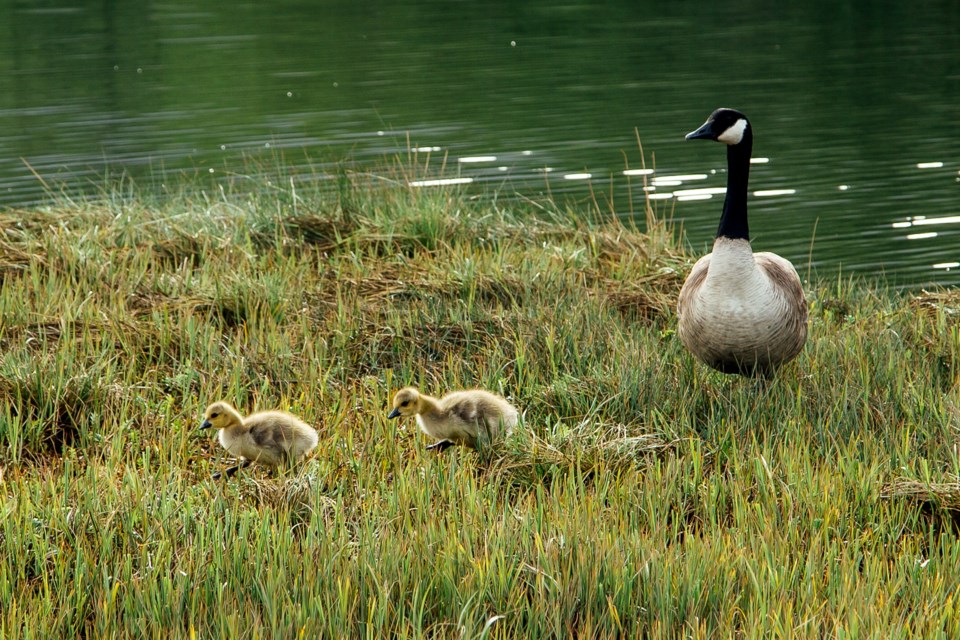Squamish photographer Amanda Palmer captured these adorable shots of Canadian geese in the Squamish Estuary on May 6.
Though they are as common in these parts as a sweaty and dusty Squamish climber mid-summer, Canadian geese are fascinating creatures.
According to a report to the Vancouver Park Board and City of Vancouver by UBC scholar Jennifer Rae Pierce, there are two distinct populations of Canada geese in Canada.
"One population migrates seasonally in spring and fall; the other stays in the same region year-round and is referred to as resident, or temperate-breeding," reads Pierce's report.
"The resident populations are non-native, unlike their migratory cousins. In the 1970s, resident Canada geese were intentionally introduced to Metro Vancouver and other areas in southern Canada to enhance wildlife viewing and hunting."
Here are some more feathery fun facts about them from the Canadian Wildlife Service and the SierraClub of BC.
•Adult Canada geese weigh up to eight kilograms (about eight pounds), and their wingspan can be almost two metres (6.5 feet)
•They feed on grasses, small plants, berries and water weeds
•There are at least seven million Canada geese present in North America, which is incredible when you consider that 55 years ago, they were considered extinct due to unregulated hunting
•The increase in Canada geese populations was due to their adaptability to environments that have been heavily influenced by human populations
•Canada geese return to nest where they first learned to fly
•They lay between five to seven eggs. The eggs take almost a month to hatch, and the family starts walking away from the nest site soon after the chicks have hatched. During this time, the adults are moulting, and they can’t fly. Once the chicks and adults are able, they join up with other geese and begin the journey south




